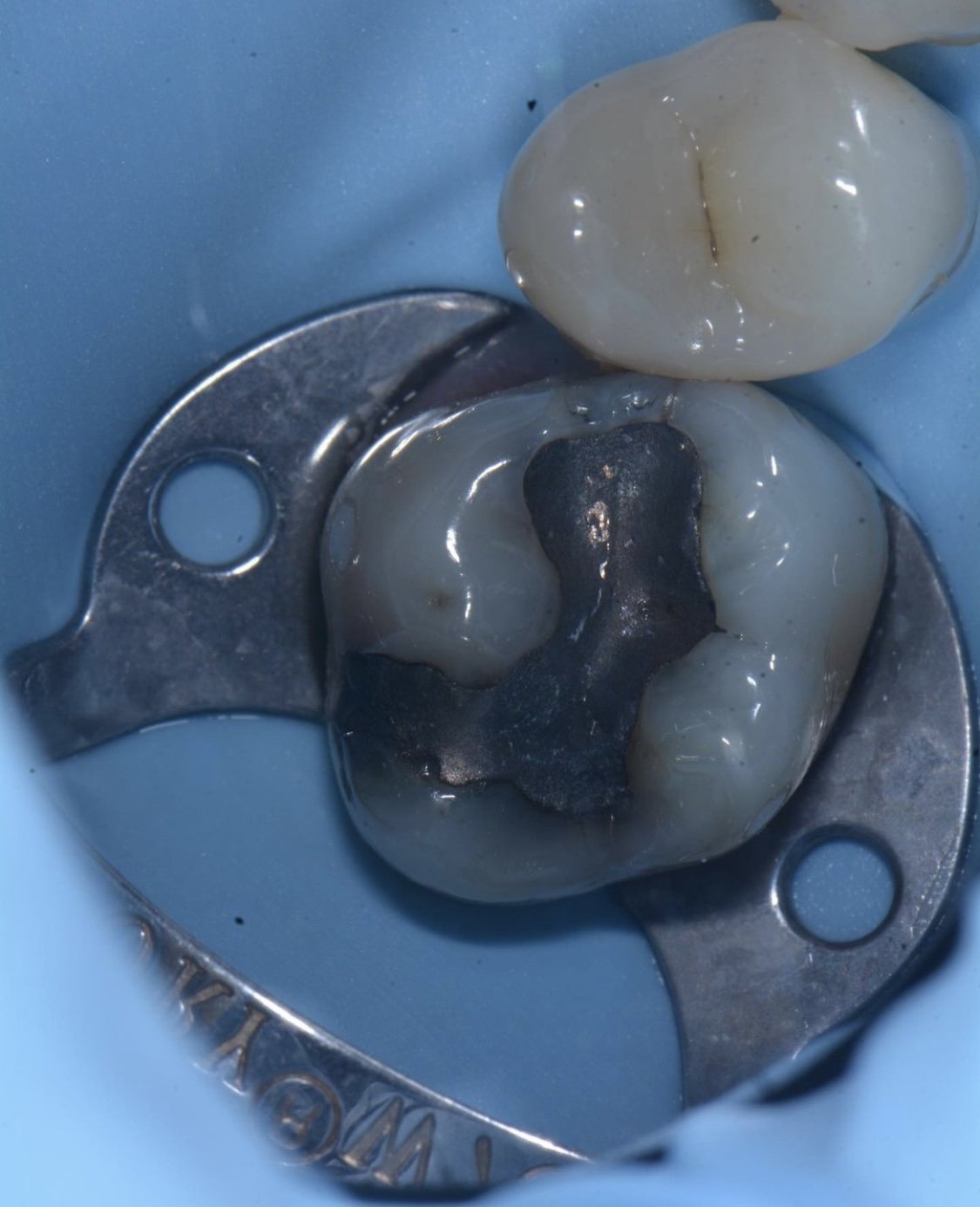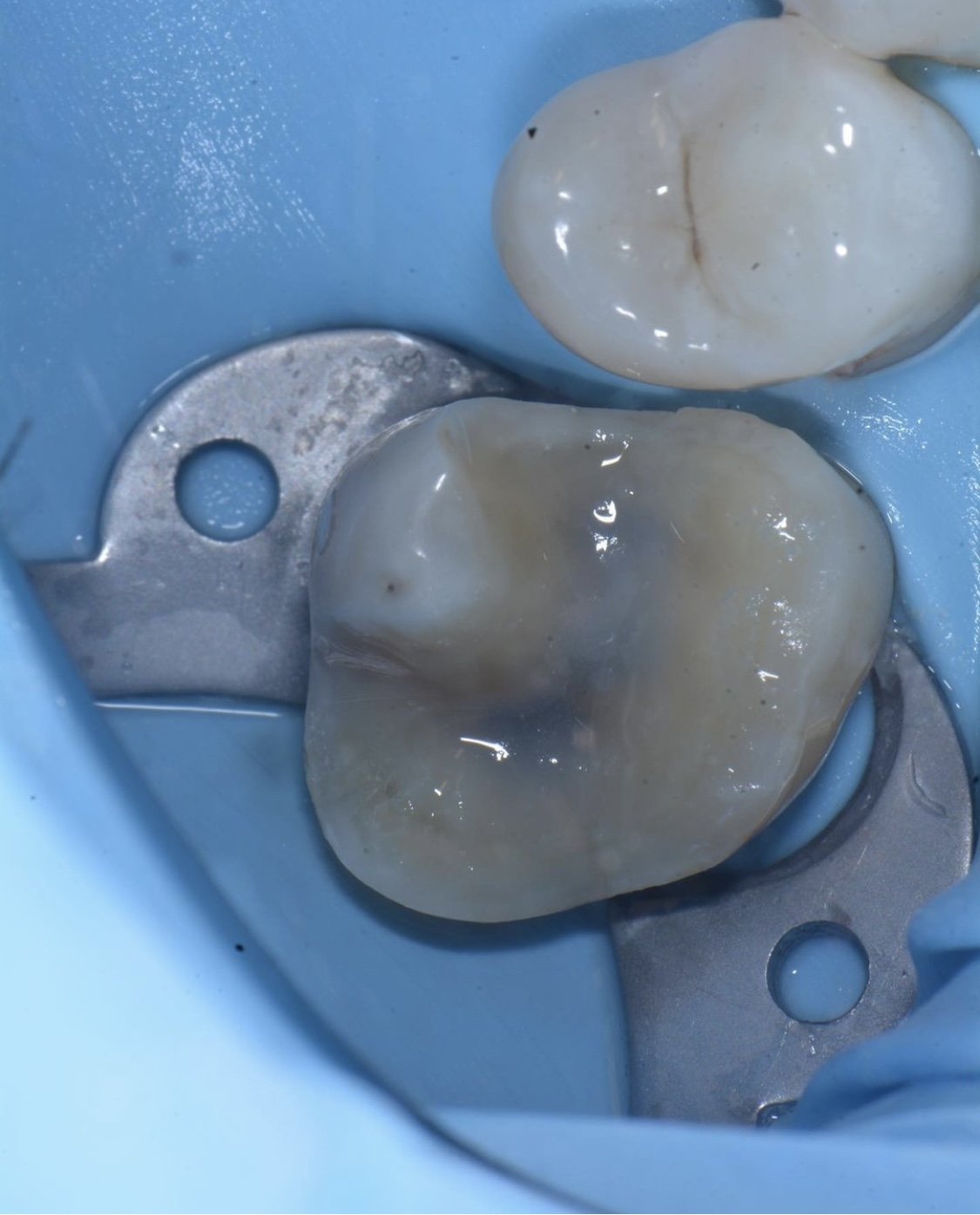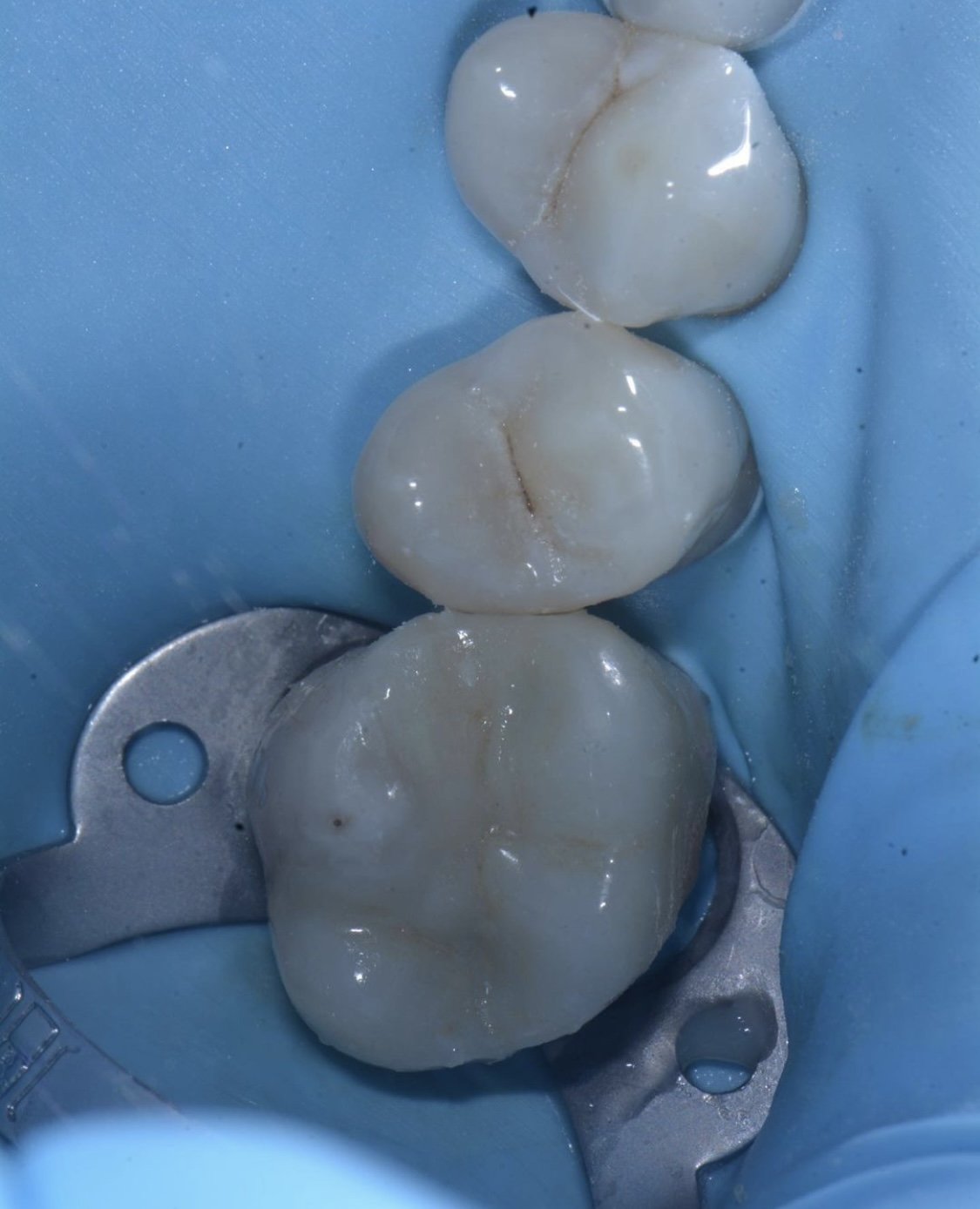See Our Work
Our Favorite Case To Share
Dr. David Alleman
This case is one of our favorites to share because it shows the longevity of biomimetic restorations. This first photo (2002) is a tooth eight years after it was restored using biomimetic restorative dentistry, still symptom-free and functioning like a natural tooth.
This second photo (2012) shows the same tooth 18 years after it was restored. Over those two decades, the patient reported no symptoms or discomfort from the restored tooth. With traditional crowns lasting an average of four years and resulting in symptoms and further treatment, cases like this show us that biomimetic dentistry is the better option for patients.
Diagnosing and Treating Symptoms
When this patient reported pain on biting, nothing looked wrong with the tooth, but Dr. Alleman still wanted to address the cause of the discomfort. With the use of high magnification and intraoral photography, the cause of the symptoms was identified as a crack.
Dr. Davey Alleman
The next steps were to remove the crack and seal the tooth, treating the symptoms and protecting the tooth from cracks and bacteria in the future.
Providing You With Options
Dr. Davey Alleman
1.Traditional practices would recommend placing a crown on this tooth due to the size of the failing amalgam. Thankfully, we can offer patients other options that are better for the long-term health of their tooth.
2. It is common to find decay under traditional fillings and crowns because they are not properly sealed against bacteria. When restoring a tooth using biomimetic techniques, decay is completely removed except right near the nerve. Precise measurements are taken to protect the tooth’s vitality. Drilling into the nerve can cause necrosis.
3. Now the tooth is sealed with the “biobase,” which protects the tooth from future cracks and decay. Clinical studies show that bacteria sealed under the “biobase” because it cannot be safely removed goes dormant and does not pose a risk to the nerve.
4. A ceramic onlay is bonded to the “biobase” using biomimetic techniques that allow the tooth to regain its natural resiliency. This restoration will remain symptom-free and bonded for years if not decades.
Reliable Results
Traditional practices offer inconsistent results. Because they do not address the cause of symptoms — decay and cracks — and do nothing to prevent further occurrences of these pathologies, the fillings and crowns fall off or become symptomatic within a few months to a few years. Tooth pain or sensitivity after dental treatment should not be accepted by patients or their dentist.
Dr. Davey Alleman
Biomimetic techniques remove decay and cracks while protecting the vitality of your tooth and preserving tooth structure, then seal the tooth to prevent future concerns. This means every restoration at the Alleman Center gets bonded and stays bonded.




















